1 stage vs 2 stage HVAC
We are building 5 bedroom house, 5500 square feet house in Texas, 2 floors with 11" ceiling, with gaming room and 3 bedrooms on 2nd floor which won't be used unless guests come. 1st floor will have master and guest bedroom on one side and living room/kitchen/dining room and study on other side. 3 thermostats downstairs and 2 thermostats upstairs. Initially was told will need 3 HVACs. Later told only 2 HVACs but instead of 4 ton will need total of 5 ton capacity.
Now it was being suggested to use 2 stage system. I spoke with HVAC person. Per them:
We should be pitching to the home owners the 2 stage but now with the actual tonnages and how we are zoning them it has gone from highly recommended to it really need to happen due to sheet volume of air we are having to use now with the rezoning and sizing.
We need about 4.1 tons of air for each of these zones which automatically take us to a 5 ton. So we need to relieve that much air when running ducts but that’s not a bad thing most home owners love having extra capacity and with a home of this size with these windows im glad we have it but that doesn’t change the fact that since this is zoned so many ways often only one or two zones could be calling for air at any given time.
Also another plus is we now will have plenty of room to be able to add that future onto that system for us.
With a single stage system that means that even with our bypass on the systems if only one of the zones is calling for air like the master bedroom but nothing else we will be having loud ducts when it is blowing. (whistling noise we can often hear in a home when its really blowing)
By upgrading the home to a 2 stage condenser we are allowing those systems to run in low stages when the demand on the system is calling for less than 5 tons of air. This insures we do not have those types of opportunities but also brings with it the much more important feature of allowing those systems to run in low stages most of the time. This reduces the cost for running the systems during those times but more importantly it allows the system to pull more humidity out of the air which has a significant impact on the comfort and quality of the homes atmosphere.
(1) I understand, it reduces humidity and can be cost efficient. But how cost efficient in reducing electricity bill, we don't know. Also since we are not living there, we don't know what monthly electricity bill will be. How much will be cost savings? If it can reduce monthly bill by $100 then $1200 in a year and at least 6-7 years to get that extra money back.
(2) It 's supposed to be less loud. How less is the question.
(3) It will reduce humidity. However it will also cost us easily $7000 more and if I buy 5 year warranty on labor then $500/system in addition.
We don't plan to add anything extra to house in terms of rooms or sq ft.
We are lost and would appreciate input in this regards.
Comments (144)
sktn77a
3 years ago10 tons of cooling is an awful lot for a modern energy efficient 5500 sq ft house.
PP thanked sktn77aRelated Discussions
carrier hvac or trane hvac
Q
Comments (5)Jt Some questions please. What is your location? What size home living area? What size furnace and eff are you replacing? What size AC are you replacing? I would like to know the exact mdl number evap coil for each quote. What thermostat is proposed for the Carrier quote? That is a big difference between the 96% eff Carrier furnace and the 80% eff Trane furnace-both 60 K input. That would be about 56 KBTUs output on the Carrier and about 48 KBTUs on the Trane. Not insignificant. I don't care for some shortcuts that homeowners make particularly on reusing linesets and using existing thermostats that shortchange a nice furnace's operational capability. Post back with the info requested. IMO...See MoreSizing of HVAC for 2 stage compressor
Q
Comments (1)No, 2 stages units are sized just like conventional single stage units. The maximum capacity of the unit (i.e., 2nd stage), must meet the design condition requirements for heat gain. If your current system is a 3 ton and your home was designed around a 3 ton unit (ductwork, return air, supply air, etc.), then a 4 ton running in high stage will not be efficient or perform well (assuming ductwork sized for a 3 ton)....See MoreSingle stage vs. 2-stage HVAC system
Q
Comments (11)The overhang issue is a big one. That along with orientation can mean the difference between not using a/c or using a lot of a/c (particularly in your climate) - particularly with 96/60 and low humidity. The unusual thing about that is that traditional construction/design keeps a house cool prior to a/c. I would presume they did it with mass in adobe construction. High desert is so ideal for mass and solar design. Manual Js are somewhat complicated but going line by line you can usually make sense of them. There is usually a summary page that includes the Heat gain and losses per item - somthing like 20,000 btuh from walls, 10,000 btuh from windows. There are measurements of walls, roof/floor, window sizes. You can't ensure that the calcs are correct but you can check the inputs. The dead ringer is infiltration - find that number and see how your house is described. This is the easiest fudge factor in my mind. They often use average - go and read what average is supposed to be - it is not new house average, it is overall average. The a/c load is possibly correct. Windows to the west can let in a lot of btus. Do you have a wall of windows to the west for a view?...See MoreComparing HVAC quotes: 2 stage AC vs 1 in SE Pa.
Q
Comments (5)@ Mike_home: I meant only de-humidifier. I am not home now, will check the humidity reading when I got back. We installed the de-humid as part of a basement waterproofing system some years back. At that time we were running a 10yr old Cent AC and the dehumid definitely was working. Prior to that the basement smelled somewhat musty (my wife is very sensitive w/ allergies) and we ran 2 portable dehumids on the first floor, emptying them frequently SE Pa can get warm and sticky, the whole house unit was needed, it will be interesting to see if we need to run it with new AC. As for the load, 3 contractors each bid 3 ton units after their inspections. I haven't seen their results, but I will ask and if I find out anything interesting, I will comment. Thanks all for your help. John...See MorePP
Original Author3 years agolast modified: 3 years agoI understand from lot of comments that this is not the right way to do. Too much tonnage. Will be noisy etc.
I need help with then how should it be done? Thanks.sktn77a
3 years agoA properly performed load calculation is the only definitive way to assess your cooling needs. Unfortunately, most HVAC companies (especially the "lowest bidders" used by builders) don't know how to do this. You may need to get an independent assessment done - will cost $250 -$500 but its money well spent.
PP thanked sktn77asktn77a
3 years agoSorry, can't help you with recommendations in Texas. AustinAir might be able to help, depending on where you are located.
You can get the heating engineer who does the load calc to review the proposed design and comment.
PP thanked sktn77aPP
Original Author3 years agoI need someone to do assessment and calculations but also propose the whole unit and setup which I can take to HVAC contractor.
PP
Original Author3 years ago@Austin Air Companie Would appreciate your comments and what plan would you come up with and recommendations -
for correct tonnage
single system with zoning
single system with minimum noise
Thanksfsq4cw
3 years agoI’m in a different climate zone that is heating dominated and I don’t know the ‘norms’ for your area regarding construction etc. so you might have to take what I have to say with a grain of salt.
I would install all rigid ductwork – not an attic or unconditioned crawl space. Regarding size, if 4-ton might not be enough I would go to 5-ton and install 2-5-ton Carrier Greenspeed systems. The reason for this choice is that everything in this system is variable, the blower fan motor and the compressor. The fan coil unit and the HP are a ‘communicating’ system; they ‘talk’ to each other. The thermostat is a ‘learning’ T-stat; it figures things out for maximum efficiency and comfort. Everything works together, when the system is installed and started up it will analyze the static pressure (resistance) of your duct system (within reason) and self adjust to what it finds and what is required. If you have a lower demand for heating or cooling the HP & fan coil will modulate down wards and operate very efficiently and quietly.
The bottom line is that you won’t likely make a mistake on size – unless you need more than 2-5-ton systems. Should you have more than enough capacity, perhaps it might be called upon if you ever enlarge your home.
This is a premium system and not cheap – but it might be cheaper than making a mistake otherwise, as with a single speed system. Perhaps you only need 2-4-ton units, I can’t say for sure. You should achieve the comfort you’re looking for with the properly sized Carrier Greenspeed that can be zoned. If the capacity is slightly larger and the system spools down to lower speeds, keep in mind that usually things that can run slower last longer.
Choose your installing contractor well, consider the 10-year extended warranty – you might need it. After the warranty is explained, ask what it doesn’t cover - and why!
This is just a very general guideline to hopefully help you out.
Keep educating yourself & Good Luck!
YMMV
IMPO
SRPP thanked fsq4cwDavid Cary
3 years agoDifferent climate for sure. Greenspeed is for cold climates and costs a premium. Oversizing in a heating dominating climate is less of an issue. I would not go to Carrier over your Trane option - personal experience (except perhaps if I was North of the Mason/Dixon line).
Independent Manual J. For us it was part of the Energy Rater's job. An Energy Rater is a company that acts as an independent consultant to do things like Manual J's, Blower door tests, insulation inspection (beyond code standards). They get you Energy Star certification if desired and goals met.
Here in NC, they also got me the Duke Energy HERO rebate which was a cash reward for meeting energy goals. It was $9k and the raters fee was about $1k. I probably did spend $8k getting it so overall an initial investment wash.
Ours was a local company that our builder had hooked us up with. They do solar installs so that might be a way to look a local company up.PP thanked David CaryAustin Air Companie
3 years ago@Ray Austin Would appreciate your comments and what plan would you come up with and recommendations -
The comments in this thread were to provide help / and or give some clarity. I don't get involved with new construction other than that. My HVAC company is built for service, after the builder has gone on to more building. I am mostly a repair / replace / and service company.
Equipment sizing for most equipment manufacturer's in single stage form.
1.5 Ton / 2 ton / 2.5 Ton / 3 Ton / 3.5 Ton / 4 Ton / 5 Ton
If your structure needs 8.2 Tons --- one way to get there 1.5 Ton / 3.5 Ton / 3.5 Ton = 8.5 Ton OR 2.5 Ton / 2.5 Ton / 3.5 Ton --- these 3 systems are zoned / without zone controls. But cost of equipment jacks pricing up. If you're using single stage equipment --- it is the more efficient way to do it.
It will cost more to run a 5 ton unit than 2.5 ton unit or 3.5 Ton unit. Floor plan can make a difference as well air is much harder to turn corners / and or cover long duct runs. By having 3 separate systems you cut those lengthy duct runs down.
A zone system is a tool in the tool box, in some cases it is a tool that is best left in the tool box. At my house (1978 era) I use zoning to increase efficiency (save money) provide better control. My sq. footage is 1910 -- it would be foolish to try to install additional units.For you: you are building a 5500 sq foot U shaped floor plan. That is alot of room to cover for 2 systems / then sizing is off way over what it should be.
U shape has 3 sides --- 3 sides = 3 separate systems.If you want single stage cheaper systems, I would avoid the zoning. If sometime later you want the zoning for better control of 1 or 2 of those systems you can do it later. But a house this size --- I think creates more problems than it solves.
Zoning can work, noises are typically not the complaints I get with builder zone systems... it's that the system doesn't work / cool properly.
I Service the Katy, Texas area Dallas is too far away for me to help any beyond this. Plus I don't do new construction. Sorry.PP thanked Austin Air Companiefsq4cw
3 years agolast modified: 3 years agoWhy do I feel that some of the design pages for the heat load gain/loss have been deleted, such as first page, 'Total Project Summary' (8.1-tons total)?
SR
PP thanked fsq4cwPP
Original Author3 years ago@Austin Air Companie "U shape has 3 sides --- 3 sides = 3 separate systems." What does 3 separate systems mean? 3 separate HVACs?
"If you want single stage cheaper systems, I would avoid the zoning." "Zoning can work, noises are typically not the complaints". How can Zoning work? How to make it work?PP
Original Author3 years agoI recieved reply from HVAC contractor (He is through my builder)
With a single stage compressor and a variable speed air handler it has to be set up so that the air handler can run slow enough to handle the latent cooling loads but not so slow that it ices up. This variable speed portion of the air handler isnt something that is an option, it is what comes with the system and helps us achieve 16 seers.
The variable speed air handler doesn’t help the single stage condenser. Only upgrading the condenser to a 2 stage will have any affect with the condenser which we discussed at length.
You have 1 full year labor warranty with a second year craftsmanship warranty meaning anything found wrong in second year that is tied back to improper install could be covered. The second year rarely is used since we would find those within the first typically but it is possible. System comes with: · 10 Year limited warranty on internal functional parts · If the product is not registered within 60 days of move in Trane’s Base Limited Warranty terms will apply.
The extended warranty is through one of our suppliers Standard Supply and their program is called “Cool Care” this is a fully transferable warranty from hvac contractors. If for whatever reason you decide you would not like us servicing your home during that period Cool Care will transfer the remainder of your contract to another authorized dealer at no cost. If we were to go out of business this would also happen to insure you get the full value for the warranty.
I sent a copy of the design to builder however changes in the field if warranted will be made and are not subject to change without a change order associated with it after install. We design the home to insure that you do not have hot spots and is in compliance with our standards to keep your warranty. We do this with your builder to be as aesthetically conscious as possible. Any home owner or builder changes to that design against our recommendations could require a change order to adjust and potentially void portions of the craftsmanship related warranty items.
As of right now we are installing single stage equipment and if there is a chance you would like to upgrade to the 2 stage you have to tell me now. We order our equipment per job and as such we are planning on installing single stage equipment match ups. I appreciate how detailed you are wanting to be in regards to your hvac however we are extremely busy this time of year and I plan on sending this job out as we had originally bid it out per your request. The signed copy of the contract as single stage we will take as you declining our recommendation in regards to the 2 stage equipment. As I stated previously the potential pit falls associated with that in regards to higher than normal humidity, loud zones for the systems or short cycling will be inspected on a case by case basis. If tied back to this decision we will have limited ability to address those concerns and potentially they will be unwarrantied. This is not to say that it will be the case, simply saying if we do find that to be true then it would fall under home owner related issue and not on our company. If you decide to go with the 2 stage equipment you will need to reply to this email today so I have it in hand Monday morning start of business and can change the equipment incase I can send it out Monday.fsq4cw
3 years agolast modified: 3 years agoI would recommend the 2-stage HPs, variable speed fan coil units.
IMPO
SR
PP thanked fsq4cwPP
Original Author3 years agoMy concern is $6000 more for 2 stage ($3000 each) + $1000 vent etc = $1000 for warranty = $8000 extra. That's quite big jump in price. Is it worth that $8000?
Is $6000 overpriced for 2 stage or reasonable given than variable speed air handler is already included in the single stage quote?
Should I but the above warranty?Elmer J Fudd
3 years agoIf I'm reading correctly, does left and right suggest that each subsystem will have both upstairs and downstairs areas?
Two story structures perform much better with separate systems for each floor. I think a better choice would be one system for upstairs, a second for downstairs. And I echo the suggestion to put no equipment or ducts in the attic.
If I've misunderstood your description, sorry.
PP thanked Elmer J FuddDavid Cary
3 years agoElmur - I think the zoning handles the 2 floor situation - works but not ideal. I suspect the run lengths are thought of as too long given the structure shape to do the more conventional - 1 unit per floor.
That letter from the HVAC company is pretty obnoxious IMO. I read that as spend the extra money or we are going to blame any oversizing issues on you.
It would seem like Dallas would have some competition. I had to work with someone like that in a rural area but in a big city you should have options.
What does your builder say about this clown? And what does it mean they bid it out? It means they aren't even doing the install? So they take a cut and have someone else do it? So you are having 2 people taking a piece (GC + HVAC)
The upcharge is too much.
PP thanked David CaryPP
Original Author3 years ago@ Elmer J Fudd Duct work will run between first and second floor and through attic space.
PP
Original Author3 years agoShould I buy Extended Warranty?
You have 1 full year labor warranty with a second year craftsmanship warranty meaning anything found wrong in second year that is tied back to improper install could be covered. The second year rarely is used since we would find those within the first typically but it is possible. System comes with: · 10 Year limited warranty on internal functional parts · If the product is not registered within 60 days of move in Trane’s Base Limited Warranty terms will apply.
The extended warranty is through one of our suppliers Standard Supply and their program is called “Cool Care” this is a fully transferable warranty from hvac contractors. If for whatever reason you decide you would not like us servicing your home during that period Cool Care will transfer the remainder of your contract to another authorized dealer at no cost. If we were to go out of business this would also happen to insure you get the full value for the warranty.PP
Original Author3 years agolast modified: 3 years agoI checked Trane website. It has only 2 models in 2 stage heat pump.
Name Product Installation Price *
XL18i Heat Pump $7,200 - $10,000
XR17 Heat Pump $6,000 - $8,400
Difference between both of them is $1,600 each
How does one choose between them? As I can choose XR17 if I decide to go 2 stage and save $3,200.
How does one even choose between various models of Trane One Stage Heat Pump:XR14, XR 15, XR 16, XR 16 Low Profile Heat Pump, XL 16i?
PP
Original Author3 years agoHow about warranty from something like American Home Shield or similar other compnay.
American Home Shield (AHS) is superior to Trane Home Warranty because it provides extensive coverage of 21 different systems and appliances, such as refrigerators, washers and dryers, air conditioning, and plumbing. American Home Shield has four coverage plans: a Systems Plan, Appliances Plan, Combo Plan, and Build-Your-Own Plan. The company provides protection for appliances and systems of all ages, brands, and models, and it covers malfunctions resulting from ordinary wear and tear and equipment with unknown pre-existing conditions. American Home Shield also offers three service fee options—$75, $100, and $125, with the higher amount corresponding to a lower monthly premium. When you invest in one of the four American Home Shield plans, your coverage goes beyond your HVAC system.fsq4cw
3 years agoSpecs seem a little thin to me. I don’t see from their ‘specs’ why you should choose the XL18i over the XR17 unless it can be explained to your satisfaction.
You could apply the saved difference to an extended warranty if that would give you peace of mind. I personally don’t like 3rd party warranties. I’d probably save that money too.
YMMV
IMPO
SRPP thanked fsq4cwDavid Cary
3 years agolast modified: 3 years agoCheck the max on the home warranties. I had a funny one.
We were selling our house and bought the common warranty as a selling feature. The rules state that it goes into effect when you go under contract. Because we were building, we did 3 months to close.
Well our problematic Carrier Infinity needed another ECM motor. $100 service fee and we got their small list of providers. But - he was great and quick. He said $1300 - which is a good price compared to others. So we (or he) went to the warranty company. They agreed to pay since we met all the criteria. $200 max. So we paid $1100.
$200 max for HVAC repair?!?! That is what a home warranty can get you. Or maybe it was $200 for that particular problem - which doesn't pay anyone's bill.
8 year old system - 2nd ECM motor died. Only 5 year parts warranty because we didn't know about registration and our company didn't do it either. (In our area, companies typically do it - but always check).
If you go to Trane's site - you see there are multiple units. So when you upgrade to 2 stage, you maybe upped to a higher level machine. In which case, $3000 per unit may be somewhat reasonable. But you see, we don't have the info.
It is a little like buying a Camry and now knowing whether the base is a SE or an LE and you are upgrading to the SLE. I have no idea about Camry's lettering system - just a guess.....
I went with Camry since the prices are about the same. It is up to you whether you want to buy a car like this. I fully understand you are probably not wanting to delay your house build so you will probably go this way. They understand that. Also, they admit that they aren't even doing the job because they are sooooo busy fixing their other systems.
PP thanked David CaryAustin Air Companie
3 years agolast modified: 3 years agoWhat does your builder say about this clown? And what does it mean they bid it out? It means they aren't even doing the install? So they take a cut and have someone else do it? So you are having 2 people taking a piece (GC + HVAC)
It's known as the sub contractor shuffle. Now you know why I don't do new construction.
@Austin Air Companie "U shape has 3 sides --- 3 sides = 3 separate systems." What does 3 separate systems mean? 3 separate HVACs?
Yes, the areas you are trying to 'zone' separately you zone them with individual systems. That is how we did it before all the junky zone systems started filling this space.
Not all zone systems are junk, but you must ask yourself who is selecting what is going into your zone system? If it's me (a single man crew) --- builder's build. 2 years is nothing in HVAC when this equipment is supposed to function for nearly 10 years, not counting maintenance related concerns.
If you have 2 floors, it is better if you have the space to zone floors separately -- forget about trying to keep everything out of the attic. People who tell you this don't work on, service and repair HVAC systems. If you do this your costs to repair, service and one day replace will be higher (putting stuff in a closet) - no room.
Zoning requires room whether it is via controls or separate HVAC systems.There's this notion that HVAC is ugly... let's hide it in some remote 'out of the way' location on the property. Then when the 100 plus degree 30 day heat wave comes we can pass blame on those people who told us that? --uh no, they are long gone.
Often times because people hate bad news in relation to their house, they sell it to some other sucker. In 26 years of doing this I've seen it more times than I count backwards.
"If you want single stage cheaper systems, I would avoid the zoning." "Zoning can work, noises are typically not the complaints". How can Zoning work? How to make it work?How to make zoning work: experience. I have two homes with single HVAC system tied to 4 zone system.
First one: 1743 square feet. 3/2/2 all three bedrooms have their own thermostat, the main part of the house has a separate thermostat to control that zone. This home is now a rental. (the system is a 2 stage AC -- with 2 separate compressors. So 1st stage is equal to 50% of the capacity of the machine)Second: 1910 sq. feet. Eventual 4/4/2 currently this is a 4 zone system tied to inverter AC heat pump with over 50 speeds (AC compressor). My electric bill for this house last month was $38 at 10.2 cents per KWH. I believe this house will eventually be 5 / maybe 6 zones when complete, it will be another rental.
All my HVAC equipment is in the attic as well as all duct work for both these homes. There is no room to put it anywhere else. The less room you have the more problems you have to overcome. Especially if the structure is a two story. (heat rises)
----------The builder does a heat load, says you need 8.1 tons of cooling. Then they blame you for short cycling when they put in two systems totaling 10 tons of cooling? LOL.
How many sections of that house is two story? Or is it laid out in a tri level ranch type fashion because part of it is built into a hill?
So they recommend: 2 Five Ton, 2 speed systems. First stage operates at 70% of capacity so 3.5 ton per system in first stage puts you at roughly 7 tons of cooling.
There's not much dehumidification in that for a dwelling that needs 8.1 tons of cooling. Remember there is no dehumidification going on if the equipment is off / not running.PP thanked Austin Air CompanieElmer J Fudd
3 years agoThink of the attic as the exterior, but in a hot summer climate as Texas, it gets even hotter than outside. Running ducts through spaces with exterior temperature makes no sense. It may be too late in your project timeline but putting upstairs ducts in drop ceiling spaces (below the lumber and insulation layers of the house-attic border) is much more efficient and effective. See the link for a brief explanation.
If this were my project, I would most certainly separate the HVAC systems between upstairs only and downstairs only. Simpler, cheaper and more reliable than zoning
Good luck
PP thanked Elmer J FuddPP
Original Author3 years agoCONDENSER 4TWR6060H1000A
COIL TEM6A0D60H51SA
HEAT STRIP BAYHTR1522BRKA
Above are the model numbers for the Trane 16 Seer Single Stage Heat Pump.PP
Original Author3 years ago
I think this is XR16
what will be price difference between XR16 vs XR17 And XL18i?Austin Air Companie
3 years agoCONDENSER 4TWR6060H1000A
@Ray Austin
I think this is XR16
what will be price difference between XR16 vs XR17 And XL18i?
Yes, that condenser is a XR16. But because that is a 5 ton unit it may not achieve 16 SEER rating. All manufacturers rate equipment with the highest SEER rating among models so as the capacity of the machine goes up, the SEER rating goes down.
It might be as low as 14.5 SEER maybe 15 SEER for a 5 ton machine. Yet another reason to install and separate more sections of the home to separate equipment. Trane hides their efficiency data so know what to know extactly unless you have an AHRI number that can be looked up.If space was more limited, zoning does better at fitting into reduced foot prints. A 5K sq ft home you've got ample room.
If you have a 2 story structure with little room, zoning helps alleviate differences in temps from one floor to the other. (heat rises) so the upstairs is always hotter. Without zoning and a single system the floor fight one another for comfort. Cooler up stairs, too cold downstairs. Comfortable down stairs too hot upstairs.
Zoning fixes that 'design' problem. Two ways to zone: 2 separate systems or 1 system with zoning controls.
On top of that a myriad of garbage zoning controls with even more problems to solve. (experience of knowing what works as much as what doesn't -- otherwise it won't last long, 5.5 years maybe less.... a long with possible erratic behavior from one season to the next.) Me personally - I don't trouble shoot ghosts, nor am I here to 'play' with garbage.
I'm here to fix it, put her to bed. Many do not like that, and that's ok. My zone systems work. Probably more info than you care to read but this isn't just for you PP. Once this is on the internet it's there forever.------------
Price difference from one model to another?
Varies like the wind. It's the dealer cost, plus their mark up.
The dealer cost can vary minimally depending on how much equipment they sell. (It's all about selling). Mark up? whatever they think they can get, some of this is also to cover costs of setting the equipment up. (commissioning the equipment or start up if you prefer)
If you're interested why I'm not a Trane dealer, this thread details a good part of my reasoning.PP thanked Austin Air Companiemike_home
3 years agoCONDENSER 4TWR6060H1000A <---- This is a Trane heat pump
COIL TEM6A0D60H51SA <----- This is a American Standard air handler.
HEAT STRIP BAYHTR1522BRKA <---- This is a Trane heat strip
Get the model number of the coil. You don't want nor should you accept a third party coil. American Standard and Trane are the same equipment with different badges. I am not sure how this works in terms of the parts warranty. You would also need to know the equivalent Trane model number in order to determine the SEER and EER ratings. You should ask for the AHRI certificate for the equipment which will be installed.PP thanked mike_homePP
Original Author3 years agoregarding seer in your above comment.
per HVAC dealer:This variable speed portion of the air handler isnt something that is an option, it is what comes with the system and helps us achieve 16 seers.
PP
Original Author3 years agoThis was raised in comments here and also in initial email by HVAC dealer:
“With a single stage system that means that even with our bypass on the systems if only one of the zones is calling for air like the master bedroom but nothing else we will be having loud ducts when it is blowing. (whistling noise we can often hear in a home when its really blowing)”
He says even with our bypass on the systems -
So does that mean bypass won’t help with that whistling noise?
How loud is the whistling noise?
2 stage system will eliminate whistling noise?Austin Air Companie
3 years agoper HVAC dealer:
This variable speed portion of the air handler isnt something that is an option, it is what comes with the system and helps us achieve 16 seers.
July 2019 all furnaces use either ECM motor or Variable Speed motor. These motors are essentially the same thing, except the variable speed motor has the better ability to be controlled via algorithmic settings due to more inputs on the motor.
Manufacturer's no longer make furnaces with PSC motors, due to higher efficiency requirements for furnaces as of July 2019. (So this comment above is partly right)PP thanked Austin Air CompanieAustin Air Companie
3 years agolast modified: 3 years agoHe says even with our bypass on the systems -
So does that mean bypass won’t help with that whistling noise?
How loud is the whistling noise?
2 stage system will eliminate whistling noise?
whistling noises are due to improper installation. Regardless whether it's a zone system, single speed AC condenser, variable speed furnace, psc furnace, ecm furnace, 2 speed AC condenser is irrelevant.
Whistling noises are due to improper installation. Period.
If you are going to have a whistling noise it's easier for a 5 ton system because the amount of air. 2000 CFM. For a 3 ton system 1200 CFM.
Typically 400 CFM of air per ton for cooling. The less air you have to cram somewhere the less chance of whistling, among other problems.PP thanked Austin Air CompaniePP
Original Author3 years agoCOIL TEM6A0D60H51SA <----- This is a American Standard air handler.
The quote says Trane Variable speed air handler. So am I getting American Standard and not Trane? Am I understanding it correctly.fsq4cw
3 years agolast modified: 3 years agoThis is for the OP and any other readers that this info might be useful for.
It’s hard to know where to start here, so much bad/conflicting information here.
BTW: I’ve installed ‘Hybrid’ NG/Geothermal systems. The only time I feel that this pays is when NG is already installed and the electric utility provides a ‘dual rate’ for electricity based on outdoor temperature, otherwise I haven’t seen where it make sense (certainly not with propane) unless someone else can explain it.
To the OP, I still strongly suggest getting a quote for geothermal, if for know other reason than to hear them make the case verses what you’re planning to install. You can only learn more. You’ll still do what you deem is best for you – as you should.
The package system you’re planning to install is highly inefficient and comes with its own high costs of installation, energy cost, maintenance repair and servicing cost as well as the likeliest shortest life cycle of almost anything that can be installed.
Has anyone explained or mentioned that your ‘packaged system’ will be running on propane (at 81% AFUE!) every hour to hour and a half while it defrosts while ‘ON’ during heating mode – not to mention simultaneously air-conditioning (cooling) your house?
Let’s recap:
“Rather than installing a propane gas furnace, a propane DHW tank or HP DHW tank, a HP and a 1000-gallon buried propane tank why not install one geothermal heat pump that can provide at very high efficiency forced air heating and air-conditioning, full capacity hot water heating for in-floor radiant and most of your domestic hot water – one system, one energy source with low risk of fire, explosion, carbon monoxide or poor IAQ?
Rather than having separate systems, take the money you’d be spending on a 1000-gallon propane tank, its burial & hook-up and spend it on a ground loop and be done with it. Your first costs of an installed HVAC system in a new build will always be the lowest if done right, with geothermal you’ll only be out the difference. There may be tax credits and rebates for geothermal that would narrow the gap, energy efficiency and lower maintenance cost will further shorten the payback by years!”
At the electrical rate that you quoted, 7.449¢, a modestly efficient geothermal heat pump will provide heating (and air-conditioning) at a cost of 2.13¢ per kW of heat delivered into the envelope of your home – contrast that to the total of any other way you’re considering when calculated on a per kW delivered basis. Even as someone else posted, that the rate increases to 11.47¢/kW, with geothermal the cost is 3.28¢ per kW delivered at a COP of 3.5.
A geothermal HP is a commercial quality machine – no condenser fans and motors, no defrost cycles ever (unless Hell does freezes over), backup only comes on to assist geo – not instead of geo and this is ‘ON’ (could be Staged) for a relatedly short period of time (unless there is a compressor lockout mode). Geo unit always operates in its own ‘conditioned’ space – never get hot cold iced-over or wet. You will likely be installing 3-packaged systems over the life cycle of only 1-geothermal unit, consider that cost as well (ground loops are almost always reusable).
If you want to go ‘cheap’ with geothermal you can (not what I would do for myself), for the size house that you mentioned probably just 1-borehole 450ft would do. That could still achieve a 3.5 COP.
I just don’t see what the fuss about geothermal is.
I still think that that packaged system is about the worst option imaginable.
YMMV
IMPO
SR
PP thanked fsq4cwPP
Original Author3 years agoI got reply from HVAC contractor
American Standard and Trane are a conjoined company which is why the coil will end up showing that it is American standard.PP
Original Author3 years agolast modified: 3 years agoUpgrade to 2 stage heat pump at $3000 each will be
CONDENSER 4TWR7060A1000C
COIL TEM6A0C60H51SB
HEAT STRIP BAYHTR1523BRKADavid Cary
3 years agolast modified: 3 years agoAlright - geo is great and all but I have to disagree.
ASHP = air source heat pump (ie conventional a/c)
GSHP = Geothermal
The savings between the two is often very small outside of extreme conditions. Usually the delta in cost is better served installing solar. (in the South).
Yes - you get a higher COP with geo. but on average it is probably 3.5 vs 3.0 or a 20% savings. So you might save on average $20 a month (my last analysis had a $200 a year savings). The extra install cost is usually 5 digits or greater than $10k.
I live in a state with a geo tax credit (unlike OP which is TX) and it still isn't worth it.
My last quote was $85k vs $20k for ASHP. Even with a huge tax credit, it doesn't pencil out. In mild climates, the installers charge a ton more because there is little competition. When the TC runs out, the installers will disappear or go bankrupt. Great for service....
This is Southern advice. Live in MN - go geo.
PP thanked David Carymike_home
3 years agoI forgot the this is an air handler and the it comes with a coil. I think the two air handlers are the same, I don't see a difference. One model may be a newer version (C versus D) of the other., but I am not sure. The heat strips are the same, the first one is a Trane model, the second is an American Standard version. The only difference is the condenser which is 2-stage. He wants an extra $6000 for the upgrade. He is making a nice profit on the upgrade which is typical for new home builds.
PP thanked mike_homefsq4cw
3 years agoRe: David Cary
I agree with what you have posted; that all makes sense to me.
My position has not changed regarding the OP. There would be value in getting a geothermal quote considering the hybrid system he’s looking to install and that these are all first costs. Where the home and the system are modest, it might pay to roll it into the mortgage and amortize it over time.
Everyone has to do their own homework and do what’s best for them.
As I say – YMMV
Thanks for your comments.
IMPO
SRPP thanked fsq4cwAustin Air Companie
3 years agoAmerican Standard and Trane are a conjoined company which is why the coil will end up showing that it is American standard.
Yeah home owners who comment here rarely realize many of these 'parts' of HVAC systems are merely 'sticker differences'.
The parts you can see like the condenser and in some cases a gas furnace will have a few differences... but they are mostly the same thing. Take the condenser: The fan top is different, the rest is the same thing... maybe a different shade of paint.
Maybe a few more differences from higher up brand, such as high and low pressure safety controls and a compressor blanket.... other than that --- same unit. Same foot print, same compressor.... but some manufacturers have gone to putting cheap compressors in 'some of' their lower brands.
Saw a Lennox a couple months ago with a Korean compressor. Trane has been using Chinese compressors in some of their models... so you never know what you will get with some of these nefarious brands these days. The 'name brand' means very little. The model is often times what is decent... but even then could be deceiving.Carrier & IPC are the same way.
Amana and Goodman are the same way.Back another lifetime ago when I worked for a American Standard dealer the coils we put in had Trane sticker on them. This was when American Standard owned Trane as well as plumbing division.
All that changed when American Standard sold off the whole kit and kaboodle. The HVAC part Trane and Am. Standard went to IR (ingersol rand) and the plumbing? I think maybe some investment group or something.If I remember correctly happened around 2011 around that same time Goodman Manufacturing sold out to Daikin.
Carrier & IPC in bed with Watts Co, but still under the UTC umbrella.
There's only 7 HVAC manufactures... maybe 8 if you consider new comer Bosch.
Slew of different brands... even more models. You'd think there were 50 HVAC manufacturer's --- nope. They all intermingle.
Constantly changing: what was considered good a few years ago is costly outdated junk now. Like communicating systems as an example. Proprietary controls namely.
So what to do? Buy an AC for what it does for you today. In my experience: 12 to 15 years you'll need a new one or it will be necessary to over haul the old one or sell the property and give it to someone else to deal with.'They all break'.... you can take that to the bank.
PP thanked Austin Air Companie- PP thanked fsq4cw
Austin Air Companie
3 years agoOk glad you found that useful. I decided to see if I could find some proof of the same ole shenanigans... yep sure did. Heavy on marketing and gimmicks low on realism and truth. But who needs truth?
Now does this mean I am bashing Trane or Am. Standard? Only to the point in which they think their product is better than something else.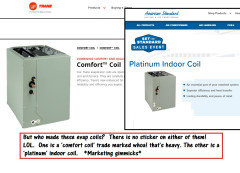
The marketing gimmicks. They have to do that to charge more. If they told you 'hey our products are good, but you will pay more over the life of the equipment' would the you still buy it?
But Ray, why wouldn't you just shut up and sell it anyway?
This comment right here: 'Hey, you sold me this equipment --- you said it was the 'best', what do you mean the indoor coils are leaking freon? What do you mean the compressor is making noise that will eventually lead to it's death?
This equipment is still new... if it was the best why am I having all these problems?That's why. --- no HVAC equipment is immune to failure. none.
So sorry, Trane / American Standard is just as good --- or as bad as anything else.
It will cost more to repair it. Marketing gimmicks cost money.--------
But what should I do then?
Focus on design. Things like zoning / how it is going to be done. What is the better way for the project to be done? Sizing of the equipment. Don't over size even if you are buying 2 speed equipment. (A half ton over size is fine. Nearly 2 tons over size? uh---- NO.)
Things like how much equipment versus controls --- further from that lay out. Ease of future service, the ability to easily repair the equipment, replace when that time comes. Things to reduce maintenance problems and or expenses.
These things are fleeting when trying to get the 'cheapest price' outside of what the equipment costs. Because design is the skill level attained by 'experience'.With that said, new construction is often times none of these things. It's more along the line of sell the system(s), hire the sub contractor to do it --- and that sub contractor makes more money by completing as many jobs as they can.
More often than not new construction has little to do with great design. Because of that I would zone the new construction home with 'equipment' as opposed to controls especially because you have the room to do so (5k sq ft)If you want zoning, add it later with someone who has in depth knowledge that it's even feasible.
Experience is gained over years, decades in the HVAC field.
As noted previously I do not do new construction. I come after the builder is long gone... in some cases as little as 1 year after the house was built.
I service the Katy, Texas area.David Cary
3 years agolast modified: 3 years agoAustin - would you agree that the scroll compressor design that Carrier (was/is) using on their 2 stage units had significant premature failure and Trane did not have the same issue?
Carrier even admitted there was a problem and paid for full system change outs but only for a limited time and only if you knew about it.
But overall, all companies have issues. I say design your house so that you can use the simplest (and smallest) system possible. That is the best way to control future costs.
Repair costs are also dependent on size of units. Refilling freon is based on size and not usually covered under warranty. So the extra you spend on sir sealing, better windows and orientation of those windows (ie avoid west) pays off with decreased energy use and decreased HVAC installation and future repair costs. And of course, keeping the ducts and units out of the attic - or condition the attic.
Austin Air Companie
3 years agoAustin - would you agree that the scroll compressor design that Carrier (was/is) using on their 2 stage units had significant premature failure and Trane did not have the same issue?
Well I can't say that I've worked on many Carrier 2 speeds since starting my own HVAC company 12 years ago. I have worked on a couple of Bryant 2 speeds that had Bristol compressors both of which failed.
But these Bristols weren't scroll compressors. Whether Carrier was using these in their two speeds I don't know. That was like 2011 and those 2 speeds I wound up replacing with Goodman 2 speeds, they are still in operation today. Replace around 2015 or so.
2 speed equipment isn't all that common even though it's been available for some time now. It costs more... so that's a good reason.
Back before 2007 I believe was when Trane / American Standard --- manufactured in Tyler, Texas their own compressors. Now, I believe the units are just 'assembled' in Tyler, Texas. The compressors they use --- for various models they make --- your guess is as good as mine.
Compressor problems can happen with any system regardless if it's scroll or not. The Korean compressor in the Lennox mentioned above was a scroll. (it had failed and the unit was maybe 7 years old I think)
And of course, keeping the ducts and units out of the attic - or condition the attic.
I work on pre-existing homes. My home has equipment and ducts in the attic. My light bill this month (May 2020) is estimated to be $59.00 at 10.2 cents per KWH.
My house was built in 1977. 1900 Square Feet / 4 tons of cooling / Single story home. In 2018 for May my light bill was $146.00 paying a less rate than I pay now. 9.2 cents per KWH (avg). This was a 14 SEER 4 ton AC in 2018.
So just keeping the ducts / equipment out of the attic doesn't do much... especially if you don't have the room. Here in Texas we use flex duct, over time that is going to wear out. It would be extremely costly to have to rip out sheet rock to replace it. So much for the argument of keeping housing affordable.
Especially when I show a very low electric bill of $59 a month / compared to a previous higher bill at a lower electric rate. Equipment for both systems: in the attic... both equipment and duct work.Elmer J Fudd
3 years ago" So just keeping the ducts / equipment out of the attic doesn't do much... "
It's not 1975 anymore. This statement isn't correct and is especially not so in places like Texas with high summer temperatures.Austin Air Companie
3 years agoIt's not 1975 anymore. This statement isn't correct and is especially not so in places like Texas with high summer temperatures.
It's a pre-existing home that was built in 1977, The HVAC system has been fully retrofitted and replaced to an Inverter heat pump. (Inverter heat pumps didn't exist in 1975 or 1977.)
However there is no room that I am willing to give up in the floor plan to put the HVAC system and duct work into the conditioned space. The home is eventually going to be another rental property.
If I was a millionaire builder like Matt Risinger maybe my goal would be different. But I took on this project to 'make money' ---- not just needlessly waste it.
Regardless what I do to it -- the market value is tied to the area in which it sits. Best I could hope for is probably $250K, but certainly not in it's current shape. (It's a fixer upper that still has a ways to go yet.)
'Projected monthly cost' from pic above: $59.14 cost per KWH: 10.2 cents. Bill above was from 2018, lower avg. Utility rate of 9.2 cents per KWH. HVAC system at the time was a single speed 14 SEER AC.
Bill above was from 2018, lower avg. Utility rate of 9.2 cents per KWH. HVAC system at the time was a single speed 14 SEER AC.
The only thing that was changed from 2018 was the HVAC equipment and line set. Configuration was the same 4 ton AC.
How much money are you going to save from $59.00 that is going to make it worth putting the ducts and equipment within the conditioned space?
Answer: no where near enough.
I am in this business to make money. I don't look for ways to kill it.$146.12 - 59.14 = 86.98 savings--- eventually this AC system pays for itself all the while keeping me more comfortable than ever.
(Note the higher bill I posted here is 1 cent cheaper per KWH, which means my savings are even greater than what I show here.)
But let's argue with the 'skilled' HVAC contractor about everything under the sun. It's been several years now Mr. Fudd... how much longer until you actually listen to what I tell you?
Provide me a copy of your light bill in California.. the land where we must make everything as expensive as we can.AB
3 years agoThanks fro all the replies:
CONDENSER 4TWR6060H1000ACOIL TEM6A0D60H51SA
HEAT STRIP BAYHTR1522BRKA
Above are the model numbers for the Trane 16 Seer Single Stage Heat Pump.
Based on the discussion above, I guess heating and cooling of the house is Electric and not gas. Correct?
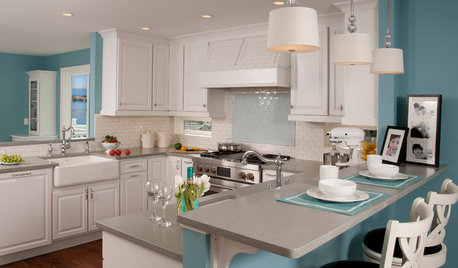
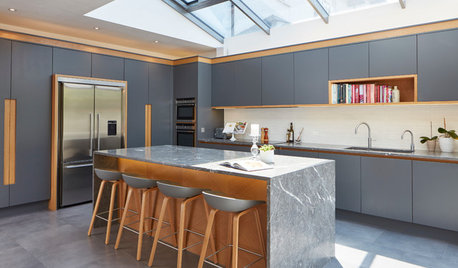

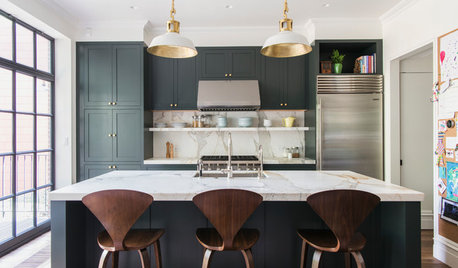

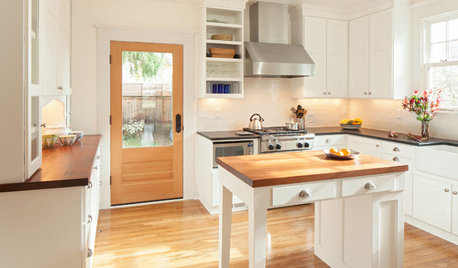
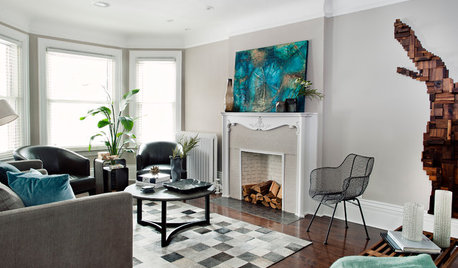
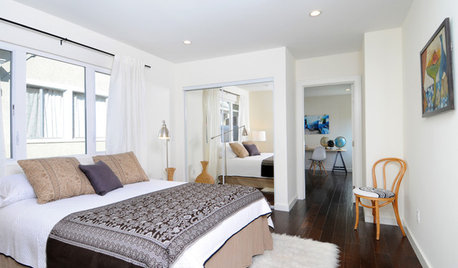

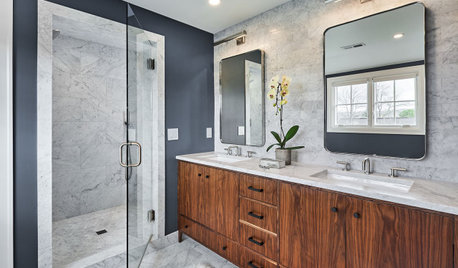



Austin Air Companie